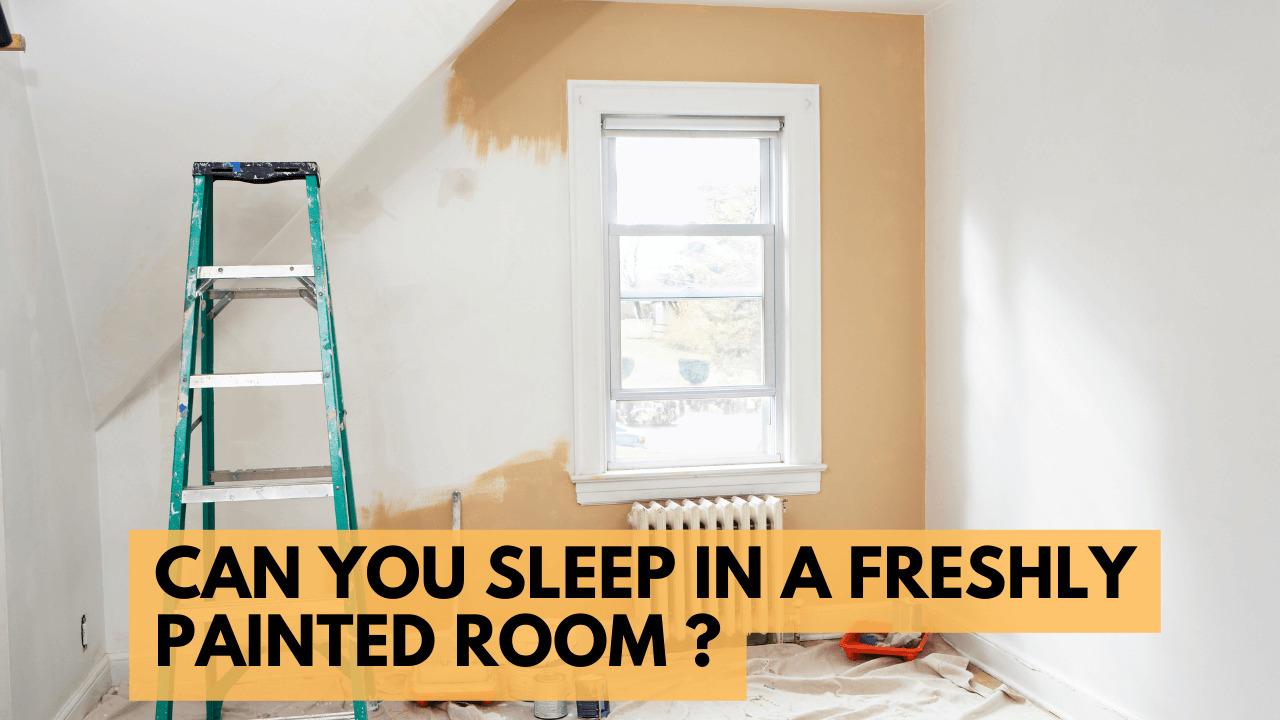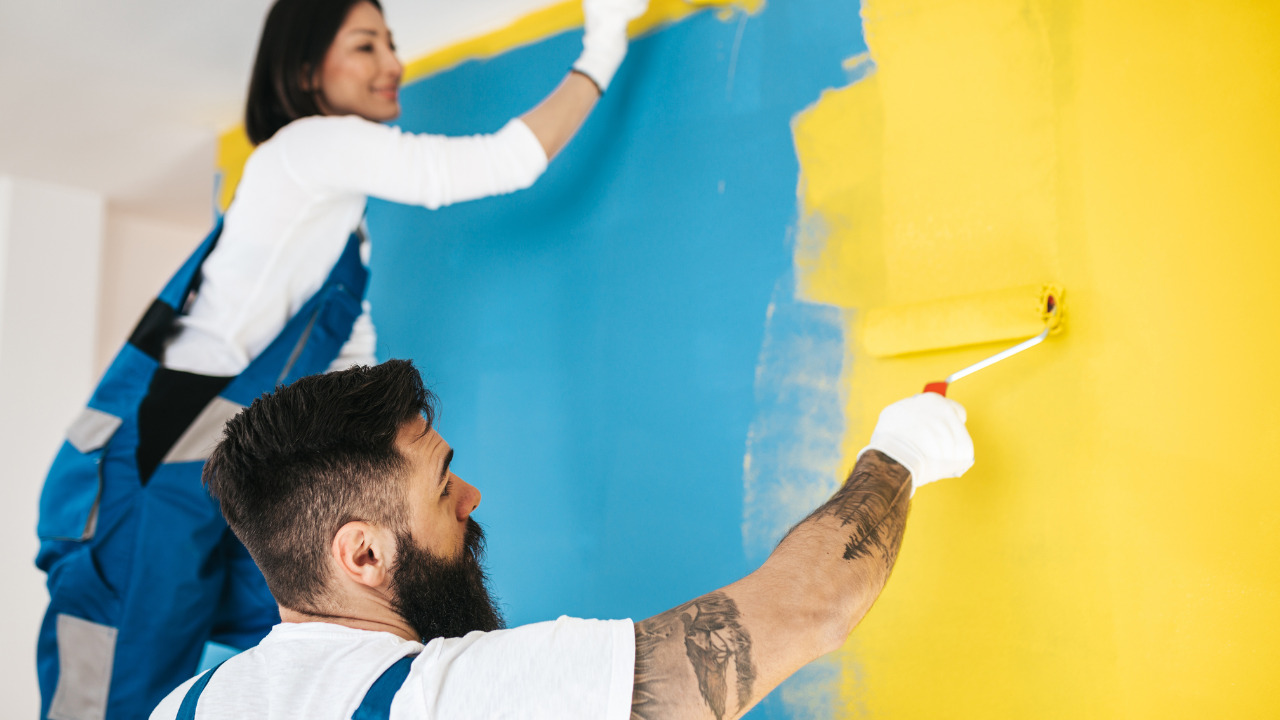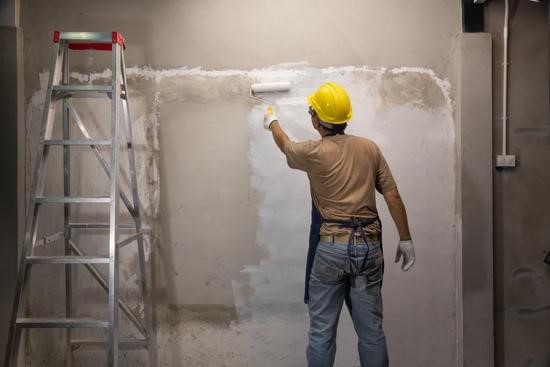If you’ve recently painted your bedroom, you might be wondering whether or not it’s safe to sleep in it. Sleeping in a freshly painted room is not safe, and it is especially dangerous for children and pregnant women because of the volatile organic compounds, which can disrupt the nervous system and organs.
Before sleeping in the room, wait at least three or four days for the paint to dry.
It is common knowledge that breathing paint fumes are harmful to one’s health, yet many people are unaware of how hazardous it may be.
We’ll look at the dangers of paint fumes in this post, as well as how to be safe while painting and afterward. Knowing how to protect yourself from harmful substances will keep you and everyone else in your home safe.
Table of Contents
Are Paint Fumes Really Dangerous For Human Health?
Paint fumes are harmful and might irritate your skin if they come into contact with it. Furthermore, they might be dangerous if they are ingested, especially if the paint is oil-based. Furthermore, paint fumes can irritate your eyes, nose, or throat, which should subside or disappear once you get out into fresh air away from the fumes.
Inhaling paint fumes has several short-term impacts. Long-term exposure to high quantities of VOCs, which can be present in paint fumes, can cause long-term harm to various systems of the body, including the neurological system, liver, and kidneys. Water-based paints emit fewer chemical vapors and volatile organic compounds.
Sleeping In A Painted Room Is Not Safe
It is not recommended or safe for anyone to sleep in a recently painted room. The VOC compounds present in the room would be especially detrimental to children, pets, the elderly, and pregnant women.
Long-term exposure to these substances can harm the brain system and organs, produce allergic reactions, and even cause cancer. After the paint has cured, you should wait at least 72 hours before sleeping in the room.
What Are The Health Hazards To Sleep In A Freshly Painted Room?
Sleeping in a freshly painted room is dangerous because paint includes compounds called Volatile Organic Compounds (VOCs), which can convert into gases at room temperature and cause several health problems.
Effect The Brain And Different Organs
The released paint compounds can build up in the brain, affecting the central nervous system’s function and causing dizziness, memory loss, and coordination problems.
VOCs can enter the bloodstream by skin contact or inhalation, impairing the function of organs such as the liver, kidneys and lungs.
VOCs can cause respiratory and breathing issues, such as irritation of the eyes, nose, throat, coughing, and asthma attacks.
Trigger Allergic Reactions
Asthma attacks, itchy and watery eyes, a runny nose, rhinitis, difficulty breathing, nausea and headaches, and even skin rashes such as eczema can be signs of paint fumes.
Long-term exposure to high quantities of VOCs can cause long-term harm to various body systems, including the neurological system and kidneys. Water-based paints emit fewer chemical vapors and volatile organic compounds (VOCs).
Development Anomalies In Unborn Child
Pregnant women should avoid sleeping in a freshly painted room, especially if oil-based paint is used, as oil-based paint emits the most VOCs. VOC exposure during pregnancy, particularly in the first trimester, has been linked to developmental abnormalities in unborn children and an increased risk of juvenile leukemia.
Higher Health Risks In Pets
Domestic pets that spend most of their time indoors, such as dogs, cats, or caged birds, should not be left alone in a freshly painted room since they are more susceptible to paint fumes than people. Pets’ lungs are smaller, making them more susceptible to respiratory infections.
How To Minimize The Health Risks Related To Freshly Painted Rooms?
There are several things you can do to safeguard your safety if you plan on painting a room in your home. Below, we’ll go through some of what you can do to stay safe.
First, make certain that you are just painting inside the house with indoor paints. You should check the product label to ensure that it is appropriate for its intended application, and this can also assist you in selecting a product with fewer toxic fumes or VOCs.
The painting should only be done in well-ventilated locations. It may be more convenient to wait for a dry day to open all of the room’s windows and doors. You might alternatively direct the air outside with a fan. If you need specialized first-aid advice, check the safety information on the product’s label you’re using.
Avoid Using The Oil-Based Gloss Paints
Gloss paints used to be oil-based, which meant they produced a lot of volatile organic compounds (VOCs), had unpleasant scents and took two weeks to dry. Gloss paints are now water-based, quick-drying, and low in volatile organic compounds.
Such gloss paints are less likely to cause health problems than other forms of paint, where VOCs continue to off-gas after the paint has dried, and the smell has gone away. Non-VOC or low-VOC paints, which are the safest paints to use indoors, are recommended to keep off-gassing to a bare minimum.
Conclusion
To summarise, you do not have to prohibit yourself from using brightly colored paint in your bedroom. While paint contains chemicals harmful to one’s health, such effects can be avoided by allowing it to dry and ventilation the room before utilizing it.
If you’re still concerned about fumes lingering in the space, consider non-VOC paints. They’re the safest option, and you won’t have to wait long to use your freshly painted space. Proper ventilation and safety measures are required for a few days after painting to push the VOCs out and make freshly painted rooms safe again.





